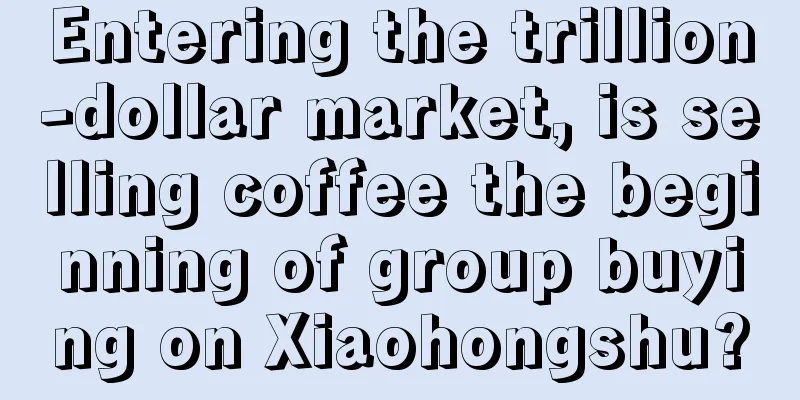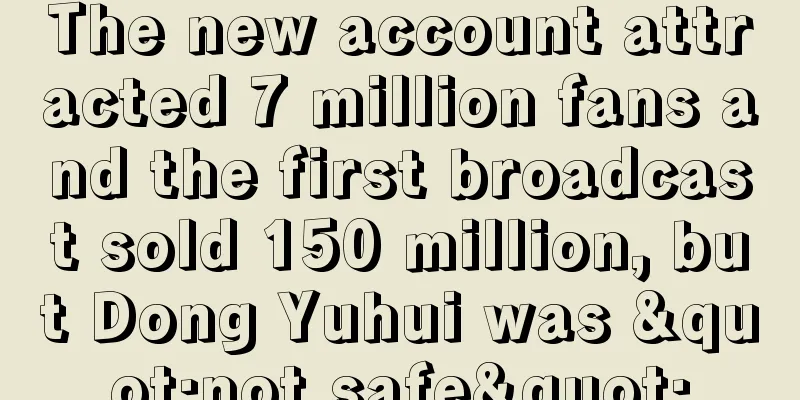What impact will Sora have on video content creation?

OpenAI's text-to-video AI model Sora has been released and has triggered a flood of news reports and comments. I am not an AI technology expert, and I believe that everyone has already learned about Sora's technical details through other channels. I just want to talk about it from the perspective of content creators: what impact will Sora have on video content (including short videos, medium and long videos, and industrial film and television content)? In my circle of friends, everyone has a complex viewpoint - some people think that Sora will revolutionize the film and television industry, and even bring video content into the era of "zero-based creation"; some people think that Sora's practical value is still questionable, especially because it does not have the "soul" necessary for creators. In fact, all of the above views make sense. The key lies in how to define "content creation". Looking back at history, we will find that the development of the Internet is the process of constant reshuffle of content creation. Various genres, various themes, and various industrial standards have been growing and declining. "Change" is the norm, and "unchange" is abnormal. The in-depth development of AIGC (including but not limited to Sora) will prompt the reshuffle process to develop in a direction that is more conducive to diversity. We might as well use a highly simplified analysis model to divide the capabilities of Internet native content creators into two directions.
A strong creator should undoubtedly score high in both abilities, so as to achieve the versatility of "both explosive power and long-distance running ability", which is the most efficient way to become a top creator. A group of such creators emerged in Douyin in 2017-18 and Bilibili in 2019-20. They grasped hot topics with their left hand and dug deep into the tonality of content with their right hand, thus becoming the "top streamer of the entire network" overnight (no need to give specific examples). Such lucky people are rare, but some will appear every once in a while, and they are the benchmarks that other content creators dream of. If a creator does not have the ability to catch hot spots (or is unwilling to do so), then his best development direction is to become a high-quality vertical content provider, attract fans who match his own tone, and rely on the word-of-mouth effect of fans to achieve "slow heat out of the circle". The most typical example of this path is Luo Xiang: in the process of teaching judicial examinations for many years, he gradually accumulated a large number of "self-fans" with his easy-to-understand and humorous tone, and finally achieved "out of the circle" by relying on the spontaneous dissemination of fans. Strictly speaking, Luo Yonghao many years ago can also be regarded as one. Generally speaking, as long as you persist long enough, vertical content providers will always usher in a moment of quantitative change to qualitative change, but most people often cannot persist. On the other hand, there are those creators who only know how to catch hot spots and lack a sense of style. Their way of survival is to "act quickly" and rely on doing everything possible to "take advantage of hot spots" or even imitate and plagiarize, so as to "go viral" as soon as possible. The life cycle of such creators is generally very short. After an instantaneous explosion, they fall into silence. They are engaged in short-term business of "having a good time and then dying". Especially in the field of short videos, professional organizations such as MCN often incubate such accounts in batches, hoping that a very small number of them will become popular, and those that fail to become popular will become "cannon fodder". Many users lament: "Internet social media is full of fast-food content, and short videos and live broadcasts are the epitome of fast-food content. There is absolutely no real content that people can calm down and experience!" However, such lament is not correct. Perhaps the vast majority of online content is indeed "cannon fodder" without any tone and depth. Just like a bottle of wine is mostly water, we cannot conclude that "wine is water". In fact, it was only in the social media era that vertical and niche content gained a stable output channel for the first time, thus winning the possibility of being seen by more people. Tens of thousands of "middle-waist" vertical creators really embarked on the path of content creation in the mobile Internet era. If you have to choose between the "previous era" and the "social media era", I believe that most creators will choose the latter rather than the former. So the question is: The birth of Sora (and the wave of continuous evolution of generative AI it has set off) will benefit which of the above creators more? I think the answer is very obvious - AIGC will benefit those vertical content providers who win by content tonality and "slow to gain popularity", and will not be conducive to those follow-up content providers who win by catching hot spots and "flash in the pan". Because in the AIGC era, the threshold for "catching hot spots" will become lower and lower, and it will no longer be a core competitiveness of content providers. Therefore, the importance of "content tonality" has further increased, and it may even become the only trump card for victory. Don't get me wrong, no matter when, "hot topics" will always come out one after another, and they also need to be covered by creators. However, in terms of speed, no matter how hard human creators try, they can't beat AI. In the field of text news, AI's speed advantage has been clearly reflected: long before the birth of ChatGPT, from finance to sports, from entertainment gossip to social news, a large number of "sudden events" were automatically written by "AI writers" at the first time; after ChatGPT was put into use on a large scale, almost all emergency reports can be conducted by AI. People who usually trade stocks may have a deeper understanding of this-open any stock information software, whether it is breaking financial news or instant interpretation of financial reports, the proportion written by AI is constantly increasing; professional analysts and commentators are withdrawing from these "hand speed competition" instant information work, and focusing their energy on in-depth interpretation that requires high logical analysis ability. The birth of Sora means that the above trend has officially spread to the video field. In time, the above trend will extend to all genres and all types of content: the "timely coverage" of hot topics will mainly be the task of AI, and the competition will mainly be the efficiency of AIGC. It is difficult for anyone to come up with a unique trick. At present, in China, e-commerce service agencies have launched the service of "AI automatically writing video scripts based on hot topics" to anchors who bring goods. Even if the anchor has no knowledge of this hot topic, he can rely on AIGC to keep up with the trend. It is conceivable that the competition for hot topics will tend to be highly homogenized in the future; economic principles tell us that a highly homogenized market will always go towards oversupply, resulting in a serious oversupply of content of the nature of "catching hot topics", and most of the content providers who use this as their core competitiveness will be eliminated. However, for those content providers whose core competitiveness lies in "tonality", AIGC can become a powerful new weapon. Internet users still have the nature of chasing hot topics, but what they need more in the future is not timely content, but distinctive interpretations or in-depth interpretations. Football fans must have a deep understanding of this: in the era of information scarcity, everyone's primary demand for football media is fast and comprehensive news coverage; today, when information is extremely developed, news coverage has long been flooded, and everyone's demands have shifted to in-depth analysis of events, as well as interactive and interesting programs. High-quality vertical creators can completely reach a division of labor with AI: the former is responsible for the tonality part, the so-called "flash of inspiration"; the latter is responsible for the part that does not require tonality, that is, repetitive labor-according to the jargon of the content industry, it can be called "trade work." AI is a tool, a technical means created by humans to help humans solve problems. From the current situation, as long as AI does not develop self-awareness, it will not have the so-called "originality", but will only collect and organize existing human knowledge - even advanced generative AI such as ChatGPT is no exception. OpenAI has announced the technical details of Sora. It can be seen that its technical route inherits the previously disclosed DALL-E text model. Although there is a certain degree of innovation, it is not subversive. Obviously, at least in the current environment, Sora is unlikely to produce real "originality", and the efficiency and appeal of its video production are still highly dependent on the "tuning" of individual users. Therefore, like all previous generative AI models, Sora's role in content creation is closer to that of an assistant in MOBA games: helping the C position to better play its own characteristics, allowing the C position to output without distraction, rather than replacing the C position to output. A strong C position player can be even more powerful with the help of a strong assistant, while an unqualified C position player will find it difficult to turn the tables even with a strong assistant. Take the "AI automatically writes video scripts based on hot topics" function just mentioned as an example. Creators with a sense of tonality can modify it on this basis to make it fit their own tonality and create high-quality content with twice the result with half the effort; creators who lack a sense of tonality may only be able to use it to produce stereotyped "garbage". So far, we can draw a conclusion - the trend of "the strong will always be strong" in the content industry will continue in the AIGC era, but its meaning is more complicated and exceeds the scope of the "Matthew effect": the top content providers will of course continue to be strong and continue to enjoy the dividends of the times, but vertical content providers with strong tonality can also enjoy the dividends of the times; for both, the next 20 years will be the best era. For other content providers, it will be the worst era. Sora once again confirmed the above trend. Of course, with AI technology changing with each passing day, everything is possible, and every dream or nightmare is likely to come true. If after a period of time, the views in this article are falsified (or partially falsified), that is also normal. We are lucky to live in an era of AIGC awakening, whether as a bystander or a participant. What is important is to think and analyze the future to the best of our ability, and whether it is right or wrong is not particularly important. Author: Pei Pei, leader of the Phantom Thieves Source: WeChat public account "Internet Phantom Thieves" (ID: TMTphantom) |
<<: Analyzing the five classic advertisements of the creative marketing giant "Mixue Ice City"
Recommend
How to break through the conversion bottleneck of online education through operation, you must understand this method
Conversion rate is like a curse on every online ed...
Tik Tok, a typical money-making opportunity
At the beginning of this article, we point out a p...
After spending 50 million yuan to "fail", the top Douyin star began to lose fans
Perhaps it is because fame brings trouble, "T...
Comparing the overseas expansion of 4 new tea giants, it turns out that these are the winning strategies
New tea brands are accelerating their overseas exp...
Shaxian snacks turned into a big hotel? Netizens: I can’t afford it!
This article starts with the minimum consumption i...
Starbucks collaborates with "Journey to the West" to open a new door to coffee delivery with "Frozen Latte"!
There are endless cross-border collaborations. Why...
What are the advantages and disadvantages of Amazon's drone delivery? Is drone delivery reliable?
With the continuous advancement of technology, dro...
A brief discussion on user link analysis from the perspective of traffic
User link analysis from the perspective of traffic...
Beware of the brainwashing around you
What is cramming brainwashing? What are its charac...
Can Shopee be linked to a mainland bank card? What are the requirements for withdrawals?
There are still many merchants opening stores on t...
Meituan's "Little Wang" removes thorns from Douyin
The upgrade of the "Super Member" system...
Will the Shopee accounts be linked? What should I do if the accounts are linked?
Shopee is a cross-border mobile e-commerce platfor...
How to modify the title in Amazon backend? How to write the title?
Whether Amazon products can attract the attention ...
How to distinguish between Shopee's main account and sub-account? How to apply for a main account?
In order to facilitate merchants to manage their s...
How to convert cross-border e-commerce? How to improve the conversion rate?
If businesses want to go beyond the domestic marke...









